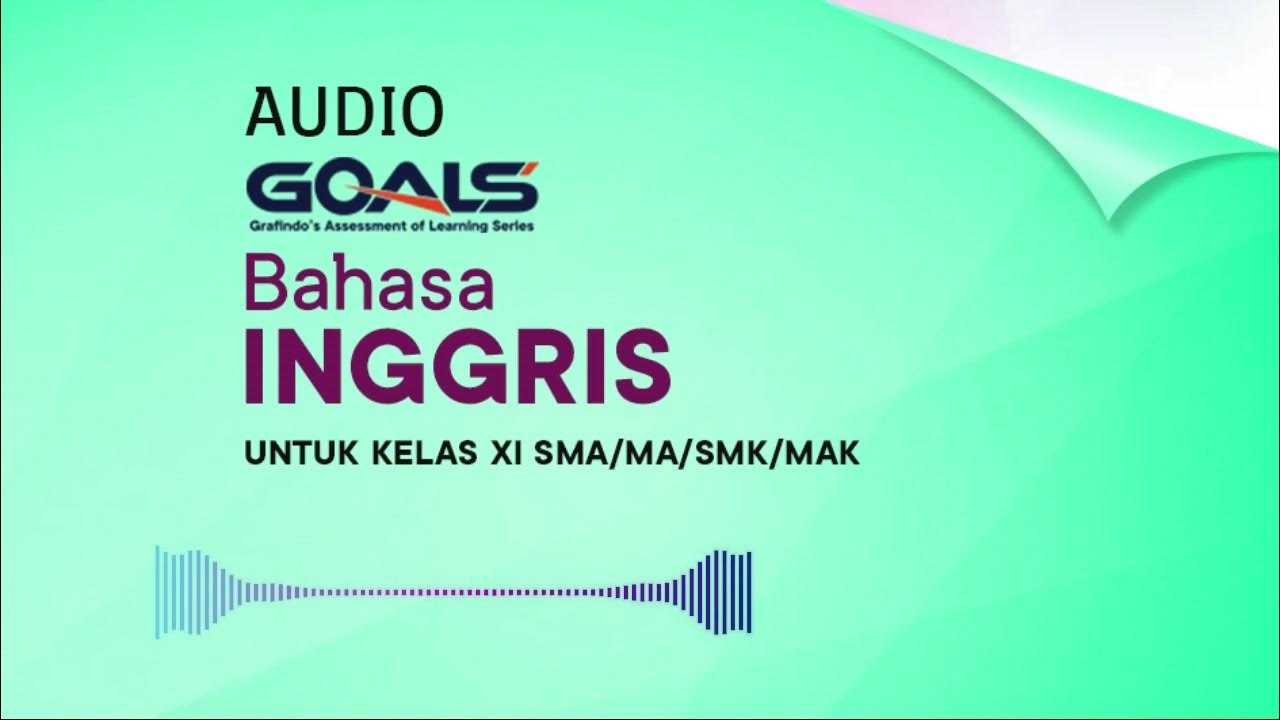Edukasi Pemilahan Sampah Siswa Sekolah Dasar
Summary
TLDRThis educational video introduces the concept of waste segregation, explaining the different types of waste: biodegradable, non-biodegradable, and hazardous waste (B3). It also emphasizes the importance of the 3R principles—Reduce, Reuse, and Recycle—in managing waste and protecting the environment. Viewers are encouraged to reduce waste by avoiding products that take long to decompose, reuse items like bottles and cans, and recycle materials like plastic packaging. The video aims to raise awareness and inspire young viewers to adopt eco-friendly practices in their daily lives to help preserve the planet.
Takeaways
- 😀 Waste is defined by Indonesian law as the result of human activities or natural processes in solid form, which is discarded and not reused or liked.
- 😀 There are three main types of waste: biodegradable, non-biodegradable, and hazardous waste (B3).
- 😀 Biodegradable waste includes organic materials like leaves, food scraps, and fruit peels that decompose naturally.
- 😀 Non-biodegradable waste, like plastic bottles and plastic bags, takes years or even centuries to decompose.
- 😀 Hazardous waste (B3) contains harmful and dangerous substances like used needles, batteries, and single-use masks, which must be disposed of separately.
- 😀 The 3R concept (Reduce, Reuse, Recycle) is crucial for managing waste effectively and minimizing environmental damage.
- 😀 'Reduce' means minimizing the use of single-use products that take a long time to decompose, like plastic items.
- 😀 'Reuse' involves using products multiple times, such as turning empty bottles into plant pots or reusing cans for storage.
- 😀 'Recycle' refers to transforming used products into new items, such as turning plastic packaging into new products like plant pots.
- 😀 Implementing 3R practices helps reduce waste, conserve resources, and protect the environment for future generations.
Q & A
What is the definition of waste according to Indonesian Law No. 18 of 2008?
-Waste is defined as the remnants of human activities or natural processes in solid form, which are discarded, unused, or unwanted by humans.
What are the three main types of waste mentioned in the video?
-The three main types of waste are biodegradable waste, non-biodegradable waste, and hazardous waste (B3).
What is biodegradable waste, and can you give some examples?
-Biodegradable waste is waste that decomposes naturally and quickly, such as leaves, fruit peels, vegetable scraps, and food leftovers.
What is non-biodegradable waste, and what are some examples?
-Non-biodegradable waste does not decompose easily and can take a long time to break down. Examples include plastic bottles, plastic bags, used clothes, and food wrappers.
What is B3 waste, and why is it important to separate it from other types of waste?
-B3 (hazardous) waste contains toxic and dangerous materials that can cause harm to health, pollute the environment, and spread diseases. It needs to be separated to prevent further risks.
What is the significance of 3R (Reduce, Reuse, Recycle) in managing waste?
-3R aims to minimize waste production by reducing consumption, reusing items, and recycling materials, helping to conserve the environment and reduce landfill usage.
What does 'Reduce' mean in the 3R concept, and how can it be implemented?
-Reduce refers to cutting down on the consumption of products that generate long-lasting waste, especially items made from non-recyclable materials like plastic. For example, using reusable bottles or utensils instead of disposable ones.
What is the concept of 'Reuse' in the 3R framework, and can you give some examples?
-Reuse involves using items again instead of throwing them away. Examples include turning used bottles into plant pots or repurposing old cans for storing small items.
What does 'Recycle' mean, and how is it different from reusing?
-Recycle means processing used materials into new products. Unlike reuse, which involves using the same item again, recycling involves transforming waste into raw materials to create new items, like turning plastic bottles into new plastic products.
Why is it essential to implement the 3R concept in everyday life?
-Implementing the 3R concept helps reduce waste, conserve natural resources, lower pollution, and ensure a healthier and more sustainable environment for future generations.
Outlines

此内容仅限付费用户访问。 请升级后访问。
立即升级Mindmap

此内容仅限付费用户访问。 请升级后访问。
立即升级Keywords

此内容仅限付费用户访问。 请升级后访问。
立即升级Highlights

此内容仅限付费用户访问。 请升级后访问。
立即升级Transcripts

此内容仅限付费用户访问。 请升级后访问。
立即升级浏览更多相关视频

Waste- Types and Classification

JENIS JENIS SAMPAH (UNTUK KELAS 4,5,6 SD) - #SampahkuTanggungJawabku

Video Animasi Cara Pengelolaan Sampah, "Sampahku Tanggung Jawabku"

Introduction To Waste | Waste Management 2020 | Environmental Science | LetsTute

AUDIO GOALS BAHASA INGGRIS UNTUK KELAS XI SMA/MA/SMK/MAK

Biodegradable and Non-Biodegradable Waste | Waste Management | How to Recycle Waste
5.0 / 5 (0 votes)
